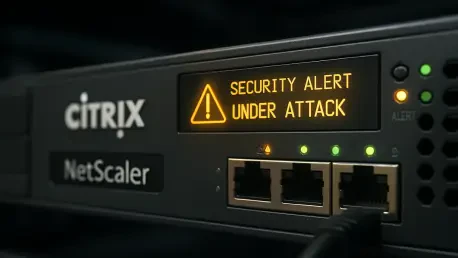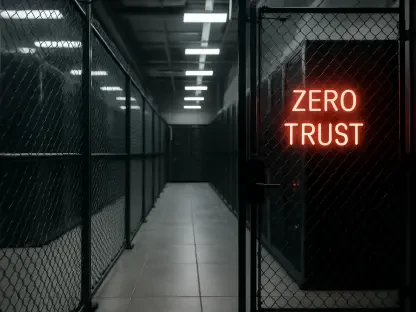I’m thrilled to sit down with Matilda Bailey, a renowned networking specialist with deep expertise in cellular, wireless, and next-gen solutions. With her finger on the pulse of the latest technologies and security trends, Matilda is the perfect person to help us unpack a critical issue in the networking world: Citrix’s recent response to a serious zero-day vulnerability in NetScaler ADC and Gateway. In this conversation, we dive into the details of the exploited flaw, the broader implications for network security, the urgency of patching, and what organizations can do to protect themselves. Let’s get started.
Can you give us a broad overview of the recent Citrix security update for NetScaler ADC and Gateway, and why it’s so important?
Absolutely, Helen. Citrix recently released patches for three vulnerabilities affecting their NetScaler ADC and Gateway products, which are widely used for application delivery and secure remote access. The most alarming of these is a critical flaw tracked as CVE-2025-7775, which has already been exploited in the wild as a zero-day. This update is crucial because it addresses not just one, but three security issues, with the exploited flaw posing a severe risk of denial-of-service attacks or even remote code execution. It’s a wake-up call for organizations to act fast, as these products are often at the edge of networks and prime targets for attackers.
Let’s focus on that critical zero-day flaw, CVE-2025-7775. Can you break down what this vulnerability is and why it’s such a big deal?
Sure. CVE-2025-7775 is a memory overflow issue, which essentially means that an attacker can send specially crafted data to overwhelm the system’s memory, causing it to crash—resulting in a denial-of-service condition. Worse, in some cases, this can be escalated to remote code execution, where an attacker could run malicious code on the affected device. It’s a big deal because it doesn’t just disrupt service; it could potentially give attackers a foothold into the network. This flaw affects specific configurations like gateway setups or AAA virtual servers, making it a targeted but very dangerous issue.
Since this vulnerability has already been exploited, can you shed some light on what Citrix has shared about these real-world attacks?
Citrix has confirmed that as of August 26, 2025, they have evidence of exploits targeting unpatched NetScaler appliances. Unfortunately, they haven’t released much detail about the nature of these attacks or who might be behind them—no specific indicators of compromise or attack patterns have been shared publicly yet. What we do know is that they’re urging immediate action, which tells us the exploitation is active and likely widespread enough to warrant serious concern. It’s a bit of a black box right now, but the lack of mitigations outside of patching underscores the urgency.
What actions is Citrix recommending to organizations to protect against this exploited flaw?
Citrix is very clear on this: they strongly recommend upgrading NetScaler firmware to the patched versions, which include 14.1-47.48, 13.1-59.22, and a few others depending on the specific product variant. There are no temporary workarounds or mitigations available, so patching is the only way to secure systems against this flaw. They’ve also noted that older versions like 12.1 and 13.0 are no longer supported, so if you’re running those, you’re out of luck for patches and need to migrate to a supported release as soon as possible. It’s a pretty straightforward but urgent call to action.
I’ve heard that the U.S. cybersecurity agency, CISA, reacted swiftly to this issue. Can you explain their role and why the response was so accelerated?
Yes, CISA moved quickly by adding CVE-2025-7775 to their Known Exploited Vulnerabilities catalog, which is a list of flaws that are actively being exploited and pose a significant risk. This listing triggers specific mandates, especially for federal agencies. Normally, agencies have three weeks to patch vulnerabilities under Binding Operational Directive 22-01, but in this case, they were given just two days—until August 28—to apply fixes. That tight deadline reflects the severity of the flaw and the fact that exploitation is already happening. It’s a signal to everyone, not just federal entities, that this isn’t something to put off.
Beyond the zero-day, Citrix patched two other vulnerabilities in this update. Can you tell us a bit about those and the risks they carry?
Of course. The other two flaws are CVE-2025-7776, with a CVSS score of 8.8, and CVE-2025-8424, scored at 8.7. The first is another memory overflow issue that can lead to unexpected system behavior or denial-of-service, similar to the zero-day but slightly less severe. The second is an improper access control bug in the NetScaler management interface, which could allow unauthorized access to certain files—potentially sensitive ones. While they’re not as critical as CVE-2025-7775, with its 9.2 score, both still pose serious risks if left unaddressed, especially since attackers often chain multiple vulnerabilities to maximize impact.
Looking ahead, what’s your forecast for the evolving landscape of network security threats, especially for devices like NetScaler at the network edge?
I think we’re going to see an increasing focus on edge devices like NetScaler as prime targets for attackers. These systems are often exposed to the internet and act as gateways to internal networks, making them incredibly valuable for exploitation. As more organizations adopt hybrid and cloud environments, the attack surface expands, and zero-days like this will continue to emerge. My forecast is that we’ll see more sophisticated attacks leveraging AI to find and exploit vulnerabilities faster, coupled with a push for vendors to integrate proactive security measures—like automated patching or better default configurations—into their products. On the flip side, organizations need to prioritize visibility and rapid response, because the window to act on these threats is only getting shorter.









